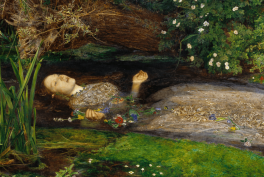What The Book Is About
In the second half of the 19th century in the USA, women devoted considerable time to hairdressing and hairstyling, as these practices played a crucial role in shaping their societal image. Depending on social class and geography, hairdressing styles and practices varied, evolving into something far more than a mere pastime. In fact, it created employment opportunities and spurred the rise of new entrepreneurs. Additionally, it even influenced architecture. Salon owners meticulously selected buildings for their establishments, ensuring they met specific requirements to enhance their businesses.
Block highlights the crucial role of Black women in the history of hairdressing, emphasizing that their culture is an integral part of this narrative. Beyond Vanity: The History and Power of Hairdressing explores Black women’s hairstyles, the care practices they developed, and the impact of socially approved beauty standards on their lives. The book also delves into the businesses they founded and their broader influence on the industry.
Finally, the book offers a comprehensive look at the hair marketplace, discussing not only the various hair products but also the broader industry that supports hairdressing. It also delves into how women decorated the intimate spaces where they cared for their hair, highlighting the connection between personal grooming and interior design.
Methodology and Language of Beyond Vanity
Beyond Vanity: The History and Power of Hairdressing is an art history book with a scientific approach. Therefore, it’s essential to examine Elizabeth Block’s methodology for substantiating her arguments, as well as the sources she utilized and the language she crafted.
Regarding her research methodology, Block drew from various sources, including paintings, photographs, advertisements, journals, and letters in which women discussed hairdressing. However, as the author notes, advertisements should be approached with caution, as business owners and publishers often employ biases and exaggerations to promote their products and services.
In addition, Block meticulously explored relevant archives for information. Nevertheless, since white men primarily wrote the archives of that era, they offered limited insight into the hair habits of Black individuals. Despite this challenge, Block successfully uncovered valuable data by consulting Black cultural hair icons and historians specializing in Black history. This effort underscores the seriousness with which she approached the topic, including Black experiences in her research.
The book’s language is clear, accessible, and reader-friendly. Even those unfamiliar with the subject can easily navigate it.
Moreover, the choice of visual material significantly enriches the research. It offers a vivid portrayal of how women styled their hair, the spaces—both private and public—where they did so, the businesses involved, and the products they used. The imagery also provides a clear understanding of the beauty standards of the era, helping readers grasp the social and cultural norms surrounding female appearance at the time.
The Hair Chapters
The book is structured into seven chapters, beginning with an introduction and concluding with a final chapter that ties everything together. The central five chapters form the core of Block’s research.
In the second chapter, Bedrooms, Barbershops, and Parlors, Block explores the spaces where women tended to their hair, emphasizing the built environment, including the decor, amenities, and overall atmosphere of these spaces. The third chapter, Parties, Stages, and Studios, examines the various settings where women showcased their hairstyles. The fourth chapter, Workplace and Marketplace, discusses how women styled their hair based on the demands of their workplace. The fifth chapter, In Motion and Outdoors, examines how women managed their hairstyles while outdoors, whether at the beach or engaging in activities like cycling. The sixth chapter, The International Marketplace, analyzes the USA’s hair business, detailing the industry’s scale through data, prices, and statistics related to merchandising, imported products, and other bureaucratic records.
Conclusion
Elizabeth Block’s goal, as she states in the book, was to “de-ephemeralize” hair. While reading Beyond Vanity, it becomes evident that she succeeded. Block concentrates on hairdressing in the USA during the mid to late 19th century, utilizing every available historical record to underscore the true significance of a subject that has long been overlooked. The book is meticulously organized, with each element contributing to the validation of her central thesis. Given Block’s stature as a prominent art historian, this level of excellence is expected, yet it’s always gratifying when she so precisely addresses our interests.
Beyond Vanity: The History and Power of Hairdressing is a must-read, set to be released on September 10, 2024, by MIT Press!












